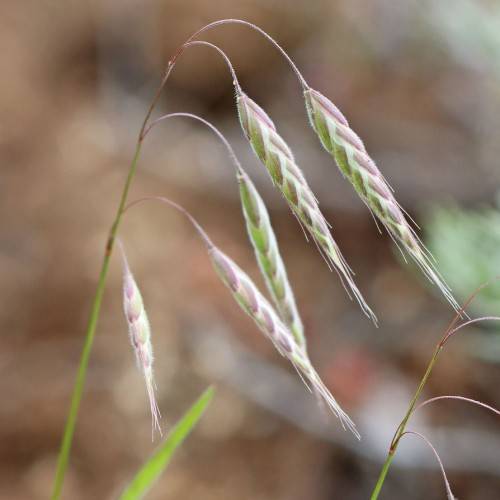
Northern Awnless Brome
Bromus pumpellianus
Also Known As - Northern BromeWatering:
Frequent
Hardiness Zone:
Sun:
full sun,part shade
Growth Rate:
Low
Drought Tolerant:
Yes
Salt Tolerant:
Yes
Invasive:
Yes
Care Level:
High
watering
Porter's Chess (Bromus porteri) should be watered about once a week when grown in full sun. To avoid over-watering, it is important to check the soil moisture level before watering. If the soil is dry to the touch, then watering is recommended. It is important to water thoroughly, ensuring the moisture penetrates deeply into the soil. Avoid shallow watering, as this encourages shallow root systems and can lead to poor growth. It is also important to water in the early morning or evening, to give the plant time to absorb the moisture before the hot midday sun evaporates the water from the soil.
sunlight
Porter's Chess is a perennial grass species native to North America that thrives in full sunlight. It prefers soils that are alkaline and high in nutrients. To ensure healthy Porter’s Chess growth, the plant should receive at least 6 hours of direct sunlight each day. From late spring to early fall, Porter's Chess prefers full sun in the morning and in the late afternoon or evening during the hot summer months. The light intensity should be strong to encourage vigorous growth and flowering. If water is available, Porter's Chess can withstand full sun for extended periods. Additionally, during the winter months, it is better for Porter's Chess to receive some indirect sunlight rather than intense, direct sun.
pruning
Porter's Chess should be pruned twice a year, once in early spring before new growth and second in the fall after flowering. During the pruning process, you should remove all dead, broken and diseased stems. In the spring, prune the plant to the desired shape. This will help the plant retain a good shape and promote vigorous flowering. In the fall, prune back any straggly growth and any spent flower heads. Pruning in the fall will also help the plant retain a pleasing shape and encourage more flowers to be produced the following spring. Pay attention to the area around the plants and clean up any debris that might promote new and unwanted growth.
